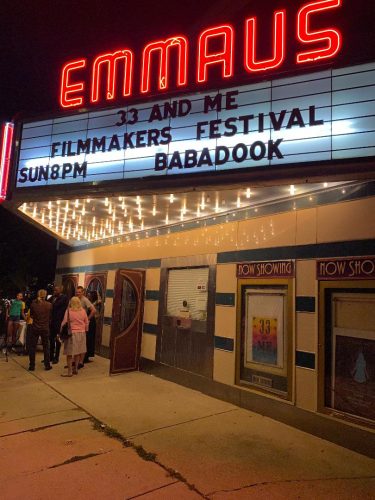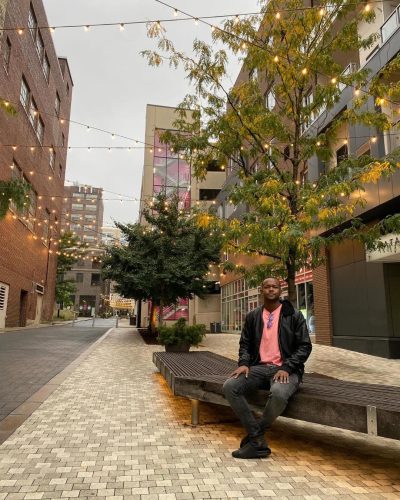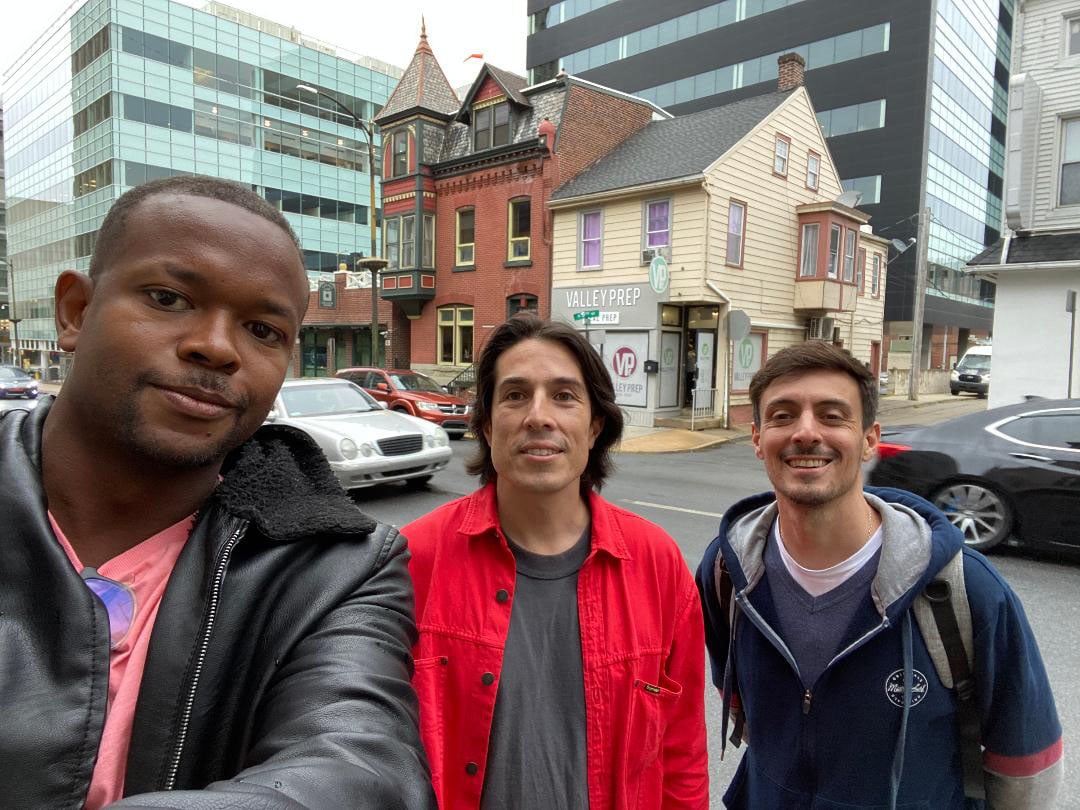Travelling to film festivals and meeting filmmakers from different cultures is always an enriching experience. Stephanie Gardner, a filmmaker from New Mexico, embarked on a journey around the world at 33 to meet fellow filmmakers of a similar age. This ambitious project began in 2018 and culminated in late 2023.
Gardner’s vision to eventually bring these filmmakers together to showcase their films and participate in workshops designed to enhance their craft is currently being realised with the 33 and Me Filmmakers Festival in Pennsylvania. She is also producing a film series about her travels. The festival features 33 filmmakers from 33 countries. Guyana is being represented through two recent films.“Eating Papaw on the Seashore” was screened on September 27th and “Old Toy Train” is on today, September 29th.
Having planned a film festival, I know firsthand the immense challenges involv-ed in such an undertaking, particularly as an independent filmmaker. Organising a festival comes with significant logistical hurdles; from securing funding to finding venues for screenings, all while working with a tight budget. Gardner has gone the extra mile, packing the days with activities that begin as early as 10:00 am and extend past 10:00 pm.

The festival is being successfully pulled off thanks to the incredible support of Gardner’s friends, community and family, who have generously opened their homes to some participants (while others stay in hotels) and provide transportation to each event. This experience has underscored the importance of community support in making any event a success. Moreover, the opportunity to build a community across borders has proven invaluable, highlighting the richness of collaboration and shared purpose.
Our cultures and ways of life may differ, but there are many shared similarities among filmmakers. Many of us showed an inclination for artistic expression from an early age, often using our families as the first audience for dramatic presentations. There is a deep-seated desire to explore personal feelings about issues that impact our lives, with the goal of shedding light on them.
Filmmaking also offers a form of catharsis, but beyond that, filmmakers from different countries are striving to maintain hope through their work, hoping to inspire positive change in society. Gardner noted that this was one of the key factors in her selection of filmmakers for the festival. It’s this expression of hope through cinema that connects us as human beings.
The filmmakers have sought to capture hope through both documentaries and fiction, focusing on individuals and their personal struggles. One standout was “Between Lands”, a film from Mexico directed by Atzin Gonzalez. It explores the lives of Mexican immigrants who are deported due to a lack of documentation, highlighting the separation of families and the psychosocial impact on both children and parents. What made this film especially compelling was its avoidance of the typical political talking points. Instead, it offered a refreshing, human-centred perspective.

All too often, it is the voices of policymakers that dominate the conversation, while the faces of those directly affected and the trauma they endure, remain unseen. “Between Lands” broke away from this pattern, offering a deeply
intimate and personal portrayal of families. The raw, authentic emotions expressed on screen showed that these families must have felt safe with Gonzalez to share their stories so vulnerably. It was a pleasure having him present at the festival, as I had the opportunity to ask about his process and how he managed to create such a heartfelt film without it feeling exploitative.
There were other intimate personal stories that the filmmakers touched on and many were eye-opening. However, just as important as watching films is listening to the filmmakers talk about their country and challenge cultural perceptions of mass media which can often lack nuance about a country’s situation.
The festival featured a segment called “Cultural Coffee,” where filmmakers discussed their countries, and the audience had the opportunity to ask questions. I found the segment with Zimbabwe particularly engaging, as it highlighted many parallels with my own country’s history of colonialism. For instance, in Zimbabwe, the towering figure of Robert Mugabe initially gained widespread support for his role in securing rights for Africans from the white minority rule. However, his later dictatorship created economic instability. Filmmakers Charles and Thandie Mawungwa explained that while America and the United Kingdom were perceived as adversaries for opposing this liberation, Russia and China were seen as allies. This conversation served as a reminder that people are not easily classified as heroes or villains; they are complex and defy simple labels.
The screening of these films and the cultural exchange that accompanies them are incredibly important, as they allow outsiders to learn about a people’s culture from the people. This is vital. The festival provides filmmakers with a platform to share their perspectives and dispel myths or harmful stereotypes that their countries may face. For Guyana to be part of this festival is significant because, as a filmmaker, my main goal is to share our stories with the world. Having spaces and opportunities like this is no longer just a goal—it has become a reality. Audiences will see Guyanese landscape, culture, customs and language on the big screen. I am also experiencing new cultures and people’s way of life and their way of filmmaking. It has been an enriching experience.





